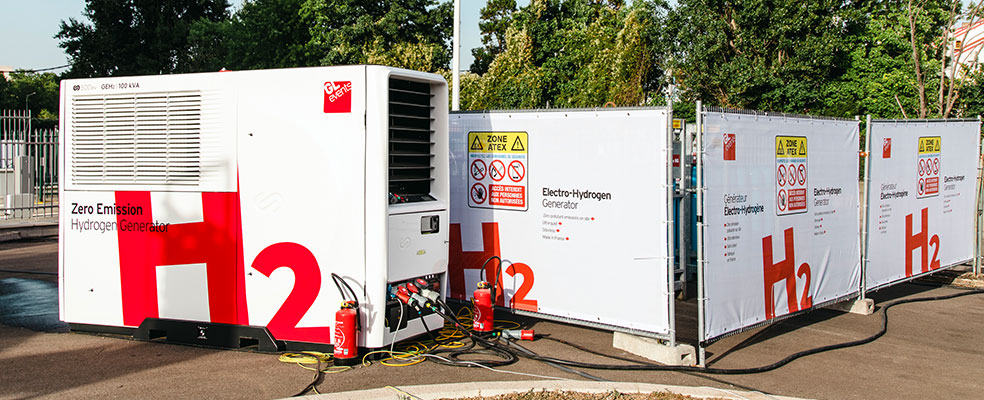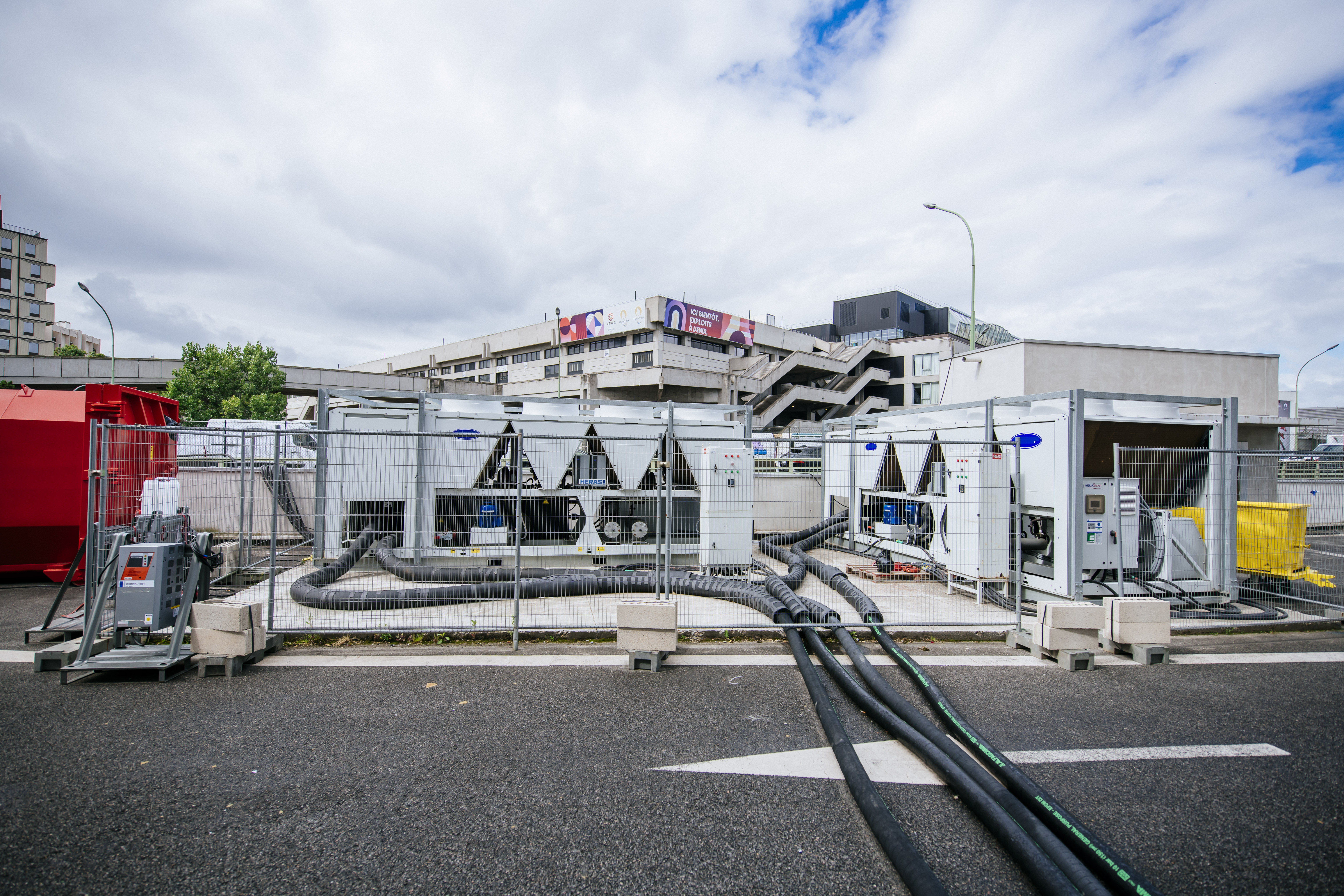
Complete electrical safety guide: ensure the smooth operation of your event
Complete electrical safety guide: ensure the smooth operation of your event
At GL events Audiovisual & Power, we understand that electrical safety plays a central role in the success of any event whether cultural, sporting, or professional. A faulty electrical installation can have serious consequences for operational continuity, public safety, and regulatory compliance. This comprehensive guide is designed to support you in implementing a reliable electrical system that complies with current standards and adapts to the specific requirements of your event.
Understanding the importance of electrical safety for your events
Organizing an event requires setting up a temporary electrical installation, often complex and exposed to numerous risks. Safety cannot be left to chance. It is essential to ensure circuit compliance, control voltage levels, and provide appropriate protection equipment to prevent any electricity-related hazards.
This requirement took on its full meaning during the Paris 2024 Olympic and Paralympic Games, where GL events Audiovisual & Power was commissioned to secure the temporary power supply for over 70 percent of the competition venues.


contact An expert
Risks associated with poor electrical management
Poor management of electrical installations can lead to short circuits, overheating, or voltage drops. These incidents not only affect the quality of the event but also endanger the safety of staff and attendees. Failure to comply with applicable standards significantly increases the risk of accidents.
Power outages and their impact on the event
A power outage can paralyze an entire event. Sound systems, lighting, food stands, and security equipment become unusable, causing inconvenience for participants and financial losses for organizers. Such outages are often caused by circuit overloads or faulty distribution.
At the Global Industrie trade show in Lyon, GL events Audiovisual & Power implemented a high-reliability backup system to ensure uninterrupted lighting and technical demonstrations, even during an unexpected consumption spike.
Dangers for the safety of participants and staff
Electricity, though invisible, is a real hazard in the event of poor installation. An unprotected cable, a faulty socket, or the absence of proper grounding can cause electric shocks or even fires. Wearing appropriate personal protective equipment (PPE) and using clear signage helps reduce these risks.
Benefits of well-planned electrical safety
Planning electrical safety in advance means reducing the likelihood of issues during the event. A properly designed, standards-compliant, and tested installation ensures circuit stability, continuous service, and peace of mind for your team. It also enhances your professional image with clients and service providers.
Assessing the electrical needs of your event
Evaluating the electrical setup of an event site allows for proper equipment sizing, taking into account existing circuits and high-intensity zones. This assessment helps anticipate potential overloads, adjusts the required voltage for each workstation, and ensures balanced resource distribution in compliance with all electrical standards.
Site and equipment configuration analysis
Each site has its own specific features. The analysis must include the identification of power supply points, space constraints, and cable routing paths. High-consumption equipment must be listed to plan dedicated circuits and avoid hazardous overlaps.
Identifying critical electrical distribution points
Electrical distribution points should be strategically positioned to ensure efficient and secure power coverage. These areas must be protected, clearly marked, and accessible only to authorized personnel to prevent handling errors. Effective grounding is essential for all equipment, especially metal structures, to safely discharge leakage currents.
Calculating power requirements based on the equipment used
A detailed inventory of equipment (LED screens, amplifiers, refrigeration units, etc.) enables the calculation of the required power for each circuit. This step is crucial to prevent overload incidents or voltage drops and to ensure that the electrical setup complies with technical standards.

Load and resource planning
Effective electrical planning ensures balanced load distribution across multiple circuits and that each power source is used optimally. It prevents unexpected outages and guarantees the performance of installations.
Balanced load distribution to avoid overloads
Balancing loads means allocating equipment evenly across circuits, taking into account their power consumption. This prevents voltage spikes that could damage installations and pose a fire risk. Identifying each workstation also allows for optimal circuit distribution.
Optimizing the use of generators and power sources
Power efficiency relies on proper source sizing, minimizing losses, and selecting high-performance technologies. GL events Audiovisual & Power is committed to this approach by integrating the GEH2® mobile hydrogen generator into its fleet, a silent solution with no polluting emissions or odors. Equipped with embedded intelligence and a remote monitoring system, this generator enables real-time optimized consumption management while reducing the carbon footprint of events. It offers a concrete solution to the challenges of power performance and ecological transition.

Choosing and installing the right electrical safety equipment
Selecting the right equipment is essential to ensure the protection of both people and installations. This includes not only cutoff devices but also cables, distribution cabinets, connectors, and control panels that comply with current standards.
Selecting electrical protection components
Protection devices such as circuit breakers, fuses, and residual current devices play a key role in preventing short circuits and overcurrents. They must be suited to the characteristics of each circuit and tested before commissioning.
Circuit breakers, fuses, and residual current protection devices
These components automatically shut off power in the event of a fault. Their presence on all sensitive circuits is essential to limit the risk of electric shock or fire, especially in high-traffic areas.
Using appropriate cables and connectors
Cables must be sized according to the power they carry. Their insulation must be intact, their length optimized to avoid power losses, and connectors must provide secure locking to reduce the risk of connection errors.

Installation and testing of safety systems
Installation must be carried out by certified technicians. At GL events Audiovisual & Power, all our technicians are qualified to work on high-demand temporary networks. The process follows a precise wiring plan and complies with manufacturers' recommendations. Tests are performed before each power-up to validate the integrity of the installation.
Proper installation of equipment
Every cabinet, cable, and junction box must be installed in accordance with current electrical safety standards. Special attention is given to wet areas, cable crossings, attachment points, and grounding.
Complete verification of installations before the event
Continuity tests, insulation resistance checks, and triggering tests for protection devices are carried out before the event opens. A test report is often required to confirm that the installation complies with applicable electrical standards.
Training and raising staff awareness on electrical safety
Even the best electrical installation is ineffective without staff trained in its use and in risk management. At GL events Audiovisual & Power, all our technicians are trained and certified. They are familiar with procedures, know how to identify electrical hazards, and wear the appropriate personal protective equipment (PPE) for each situation.
Training programs for technical personnel
Specialized training for event installations raises awareness among staff about electrical risks, safety procedures, and equipment use. These programs also include reading electrical diagrams and identifying circuits in accordance with applicable standards. Specific training on the use of PPE is also recommended: insulating gloves, dielectric overshoes, protective visors. Ongoing training is provided at GL events Audiovisual & Power, particularly regarding new European regulations and the specific requirements of events such as the Paris 2024 Olympic and Paralympic Games.
Basic techniques for safe electrical management
Technicians must be able to shut off power in an emergency, detect an overload, and safely intervene on a distribution panel. These techniques are reinforced by knowledge of the applicable standards.
Intervention protocols in case of an issue
A clear protocol must be established: who to contact, where the wiring diagram is located, how to isolate a zone, and so on. Procedures should include a reminder that wearing personal protective equipment (PPE) suitable for the network voltage is mandatory.
Emergency drills and simulations
Regular drills help teams prepare for high-risk situations. These simulations test coordination, backup equipment, and understanding of safety instructions.
Coordination with emergency services
Firefighters or first responders must be informed of the site’s electrical layout, cutoff points, and any specific risks. Clear communication with these services is critical.
Power outage simulations and potential interventions
Creating realistic scenarios helps improve team reflexes and responsiveness. This enhances overall safety and enables better anticipation of electrical incidents.
Monitoring and maintenance during the event
Once the event has started, active monitoring of the electrical system is essential. It allows for the rapid detection of any anomaly and immediate action to prevent service interruptions or risks to people.
.png)
.png)
Real-time monitoring of electrical installations
To ensure a stable power supply and prevent incidents, real-time monitoring of temporary electrical networks has become essential. GL events Audiovisual & Power includes monitoring systems in its services, enabling technicians to continuously track consumption, detect anomalies (voltage surges, deviations, load imbalances), and respond immediately in case of irregularities.
These smart systems, combined with a supervision interface, provide a global view of powered circuits and contribute to proactive risk management. They are especially suited to complex events, where the reliability of the power supply is critical to the technical success of all audiovisual and logistical installations.
Use of advanced monitoring systems
Sensors installed on distribution panels transmit data to a supervision platform. These tools make it possible to anticipate failures, monitor load balance, and adjust parameters remotely. Backup circuits should also be included in power monitoring, even if they are not continuously active.
Regular reports and responsiveness to anomalies
Analytical reports can be generated at regular intervals to track the status of circuits. In the event of an alert, teams must be ready to intervene immediately using equipment and protocols that comply with all applicable electrical standards.
